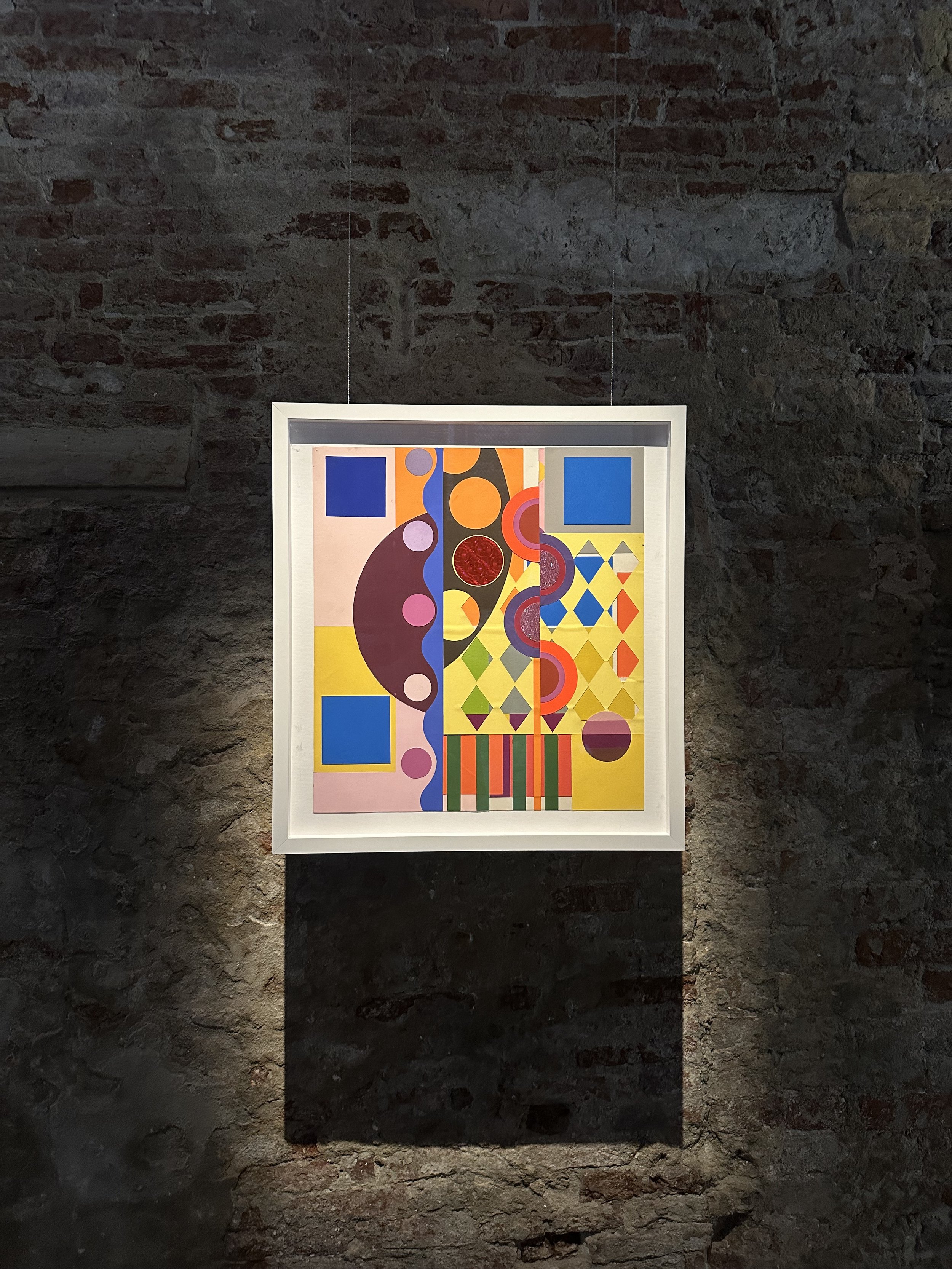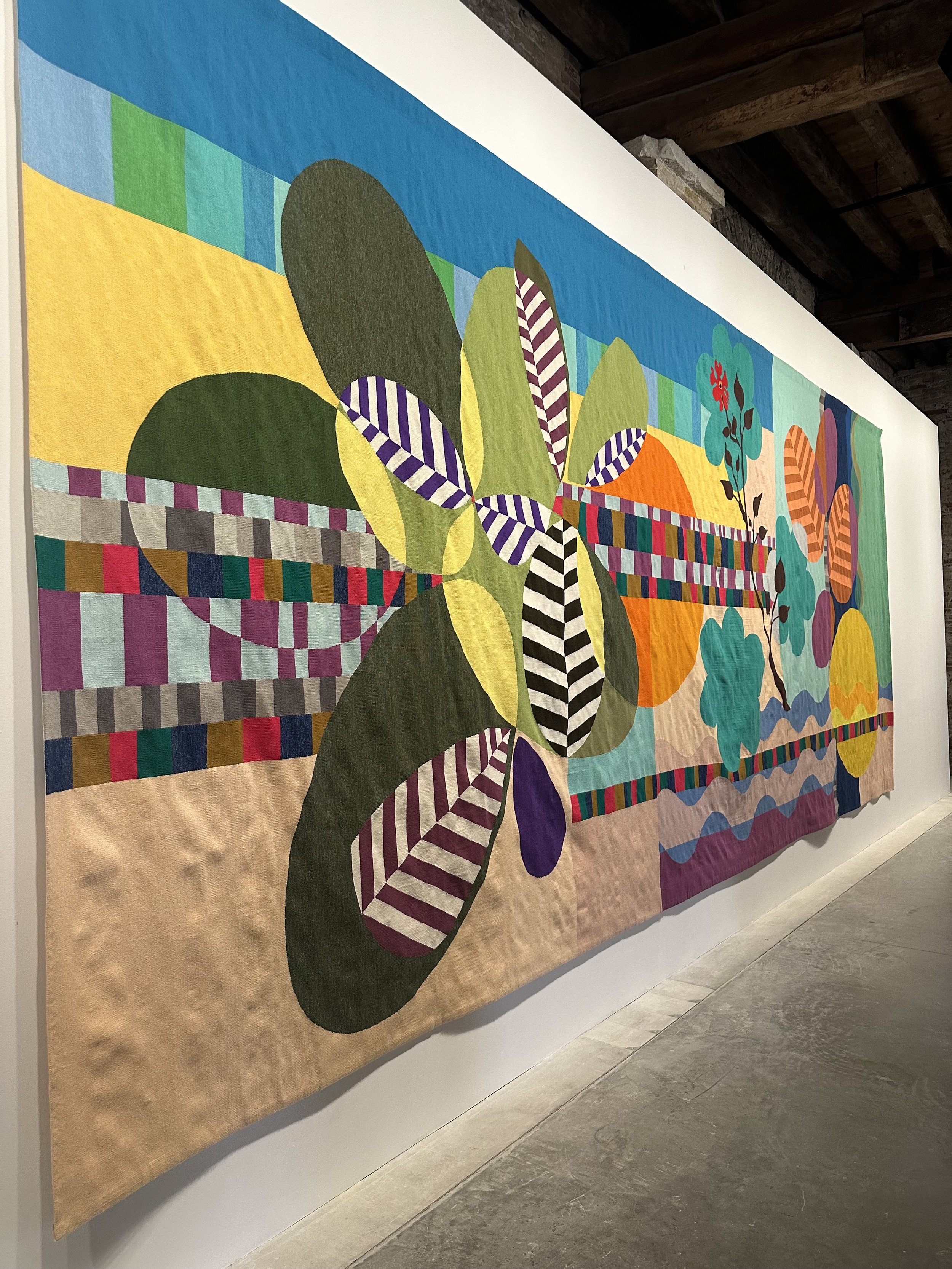Colours of Brazil Painting The Art Market In 2024
Vibrancy that can be seen, felt and lived.
“Your individuality is important, but so is belonging. Recognize the parts of your culture that have shaped your past, and the parts you want to carry with you into the future.”
Drawing inspiration from the 2024 Venice Biennale with the current article, ‘Brazil’s moment in the art-world spotlight extends to Frieze New York’ by Gabriela Angelleti, the question arises: Are we moving towards a vibrant, passionate, Latin American art market in the upcoming years? As we see, there is a presence of Latin American artists, with vibrant colour palettes and saturated narratives that have been captivating eyes internationally. Through the years, Brazil has become a powerhouse for the arts, particularly in Latin America. In 2024, the Brazilian Market branches out, spreading its talent into North America and Europe.
Beatriz Milhazes, Venice Biennale Arsenale. Photo Courtesy: Celeste Melgar
“The past two editions of Frieze New York have both featured five Brazilian galleries, the highest number as a percentage of total exhibitors since the fair was launched in 2012.” - The Art Newspaper.
In 2024, the Brazilian art market stands as a pivotal force in the global art scene, reflecting the country's rich cultural heritage and evolving contemporary landscape. The significance of this market is multi-faceted, encompassing economic, cultural, and social dimensions.This impact that Brazil has created has also brought broader interest to the art produced in Latin America.
Economically: The Brazilian Art Market has shown remarkable resilience and growth, even amidst global uncertainties. Major cities like São Paulo and Rio de Janeiro host renowned art fairs such as SP-Arte and ArtRio. SP-Arte, for instance, attracts over 40,000 visitors and features works from more than 150 galleries worldwide. The robust auction market, led by houses like Bolsa de Arte and Sotheby’s, underscores the financial vitality of Brazilian art, with record sales like a Tarsila do Amaral painting in 2020 “sold for a record-setting 57.5 million reais ($11.2 million) at a São Paulo auction last week, making it the most expensive work by the artist ever sold at auction and one of the most expensive works by a Latin American artist ever to sell on the block”. (Art News)
Tarsila do Amaral, A Caipirinha, 1923. Photo Courtesy: ArtNews.
Culturally: The Brazilian Art Market preserves and promotes the nation’s diverse artistic traditions. Brazil’s art scene is a vibrant tapestry woven from its indigenous heritage, colonial history, and modern innovations. This diversity is reflected in the works of contemporary artists like Beatriz Milhazes and Vik Muniz, whose pieces have fetched millions at international auctions. The market’s growth has enabled these artists to gain international acclaim, fostering a deeper appreciation of Brazilian culture worldwide.
Beatriz Milhazes, Pindorama, 2020–2022. Venice Biennale, Arsenale. Photo Courtesy: Celeste Melgar
The art market also serves as a platform for social commentary and change. Brazilian artists often address pressing issues such as political corruption, social inequality, and environmental degradation. For example, Claudia Andujar’s works documenting the lives of the Yanomami people highlight the environmental and social issues facing indigenous communities. This aspect of the market underscores its importance as a space for intellectual and cultural exchange, where art becomes a catalyst for transformation and conversation.
Moreover, the Brazilian government and private sector’s increasing investment in the arts highlights the market’s strategic importance. Initiatives such as incentives for art purchases and support for cultural institutions like the São Paulo Museum of Art (MASP) and the Inhotim Institute have bolstered the market’s infrastructure. Inhotim, one of the world’s largest open-air contemporary art museums, attracts international visitors, contributing to local tourism and the economy.
In 2024, the Brazilian Art Market’s significance is also reflected in its role as a bridge between Latin American and global art scenes. With its rich history, diverse cultural expressions, and vibrant contemporary practices, Brazil continues to attract international collectors, curators, and scholars. This cross-cultural engagement fosters a greater understanding and appreciation of Latin American art, contributing to a more inclusive and interconnected global art community.
Celeste Melgar
Features Co-Editor , MADE IN BED




